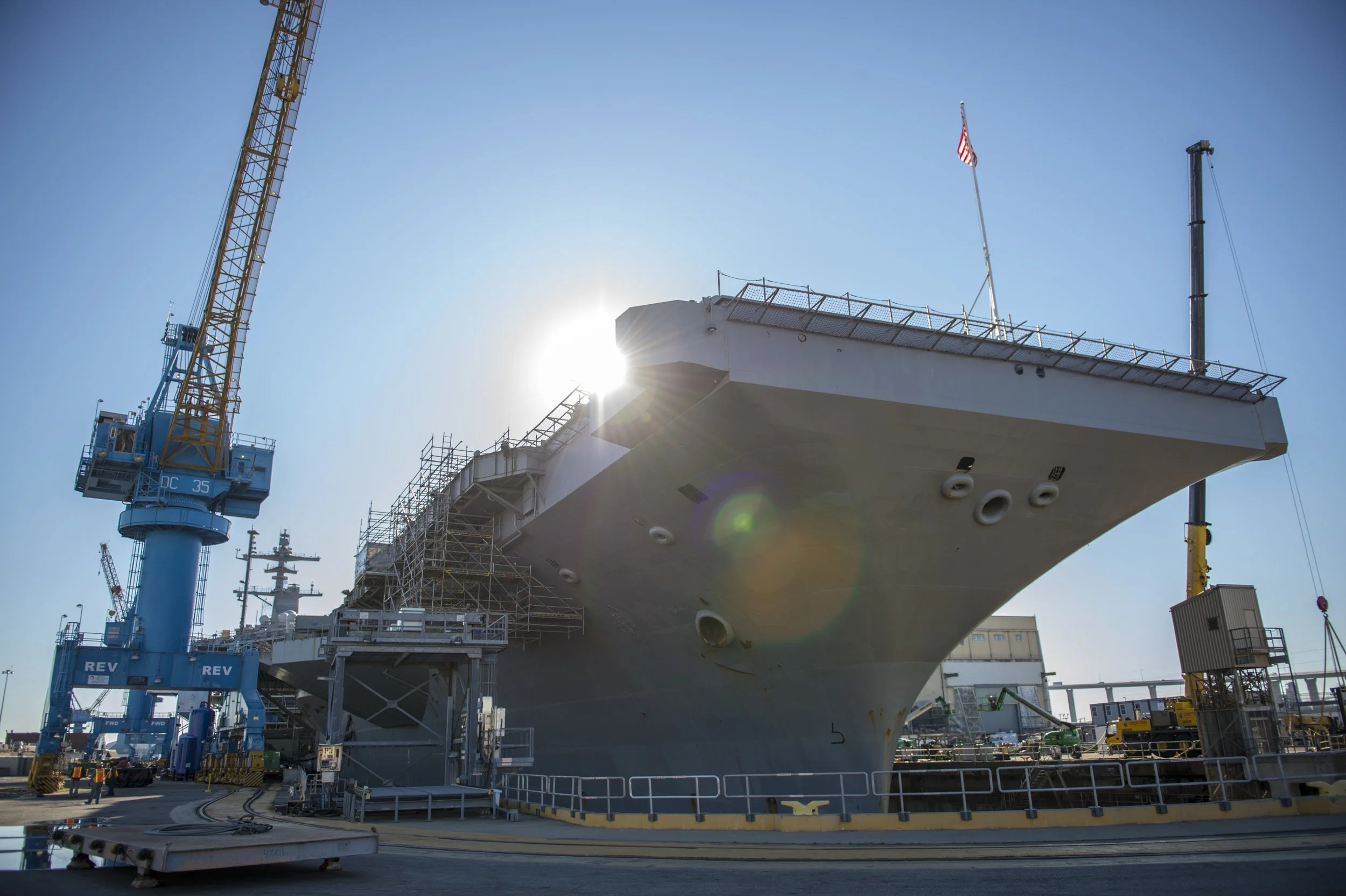By: Sam LaGrone
September 4, 2019 6:57 PM • Updated: September 4, 2019 10:34 PM
The aircraft carrier USS George H.W. Bush (CVN 77) is dry-docked at Norfolk Naval Shipyard (NNSY) in Portsmouth, Virginia, on April 23, 2019. US Navy Photo
This post has been updated with a Pentagon statement.
Navy repair facilities in Virginia and Washington State, planned port improvements for U.S. ships in Spain and a new treatment center for working dogs in Guantanamo Bay are among the military construction projects that will have their funds rerouted to build $3.6 billion in barriers along the U.S.-Mexico border.
On Tuesday, Secretary of the Defense Mark Esper presented Congress a list of 127 military construction projects at U.S. and overseas bases that would have funding deferred to build additional border barriers.
Esper “has determined that such construction projects are necessary to support the use of the armed forces, and, therefore, DOD will undertake 11 border barrier military construction projects on the southern border pursuant to section 2808 of Title X, U.S. Code,” according to Pentagon spokesman Jonathan Hoffman.
The funds will be transferred to the Army Corps of Engineers, which will oversee the construction of a total of 175 miles of border barriers.
For the Navy, projects being postponed to pay for the border barrier include $88.9 million for a submarine pier and maintenance facility at Naval Base Kitsap-Bangor. That upgrade project would allow all three Seawolf-class nuclear attack submarines to be homeported in Washington, Rep. Derek Kilmer (D-Wash.) told The Seattle Times in March.
In Virginia, the Norfolk Naval Shipyard in Portsmouth would lose $26.1 million for a new ship maintenance facility and $22.5 million for a hazardous materials warehouse.
The shipyard is in the midst of a glut of work to repair the East Coast’s nuclear aircraft carriers and submarines with infrastructure that’s more than a century old. Refurbishing the yard has been a major focus of Naval Sea Systems Command as the Navy has struggled to catch up with almost two decades of deferred maintenance.
“Pulling funding from the military makes our nation less safe and more vulnerable,” Rep. Elaine Luria (D-Va.) said in a statement. “Peak military readiness, critical modernization projects, and disaster recovery are top national security priorities in Hampton Roads and beyond.”
NAVSEA referred all questions to the Office of the Secretary of Defense when contacted by USNI News on Wednesday.
“No projects with an award date in FY2019 were selected for deferment. This enabled DoD to request funding for the projects under Section 2906 of the National Defense Authorization Act for FY2020. If that is enacted into law by Congress, and funds are appropriated consistent with that provision, there should be little to no effect on the construction timeline on those projects,” Pentagon spokesman Lt. Col. Chris Mitchell said in a statement to USNI News.
“Section 2906 would authorize funding to backfill the funds needed to undertake the deferred projects, and since none of the deferred military construction projects have been awarded, the funds authorized by section 2906 should mitigate the length of delays moving forward.”
In North Carolina, Marines will have to defer the construction of a $25.5-million facility at Camp Lejeune for a signals intelligence and electronic warfare unit. Under a previous effort from former commandant Gen. Robert Neller, the Marines have pushed to increase the service’s capabilities in those areas.
Overseas, the deferments have targeted $26.3 million for a fleet maintenance facility in Bahrain. The headquarters of U.S. 5th Fleet there will become a forward hub for the Navy’s Littoral Combat Ship fleet in the coming years.
In Rota, Spain, $21.6 million for port operations facilities as part of the Pentagon’s European Deterrence Initiative is being deferred. Rota is home to four U.S. guided-missile destroyers that are a key component of the ballistic missile defense plan in the region. $66 million in EDI funds for P-8A Poseidon airfield upgrades at Naval Air Station Sigonella, Italy, and $47 million in facilities at Souda Bay, Greece, have also been tapped for barrier funds.
The list also includes $9.08 million for a replacement to the working dog treatment facility at Naval Station Guantanamo, Cuba.



